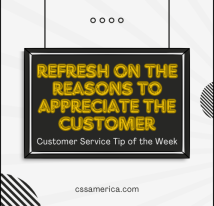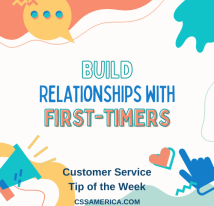
Yes, Oprah Winfrey gets her first shout-out in a CSS Customer Service Tip of the Week! She’s famous for many things – one of which was giving out presents to everybody in her audiences. She would happily proclaim: And YOU get a gift, and YOU get a gift, and YOU get a gift!
And as generous as that was, in the back of our minds we all know that she’s SO wealthy, that she can afford to give all those people gifts. Well, even if we all are not rich, we can still afford to give our customers the gift…of thanks.
I’m sure that we’ve all been brought up in homes where we were told that – in business – when the transaction ends, somebody should say “thank you” and somebody should say “you’re welcome.” But oftentimes in our personal lives, we give them our money, they give us the merchandise, and there is dead silence. But we want to hear a thank you. So we, the customer, say “thank you!” It’s like saying “thank you for taking my hard-earned money.” Or “thank you for the privilege of buying this combo meal; I really appreciate it!”
It shouldn’t be that way. Employees should initiate the thanks. Employees should convey the appreciation because the customer has an option; the customer could take their business elsewhere. So, the employee should be the one closing positively and showing appreciation.
As you’re completing your transaction, and as that conversation on the phone or face-to-face is about to end, get in the habit of initiating the thanks, of initiating the appreciation. And even if the customer says thanks before you get the opportunity, say thanks to them back. Say “I really appreciate your coming in” or “I really appreciate your bringing this to our attention.”
Realize that the customer has an opinion, and that opinion matters – that decides if they want to stay with you or want to go elsewhere. Make sure that their last memory of their experience with you is your statement of appreciation.
Thank the customer first.
Signup for FREE Tips! Contact Us More Resources for You Visit Our Home Page























